Steyr-Puch Pinzgauer 1971 Castelet 2025
English Translation
Introduction
Nous sommes en Autriche à Pinzgau dans un district de la province de Salzbourg où nous trouvons le Pinzgauer. Mais sous ce nom se cache plusieurs choses
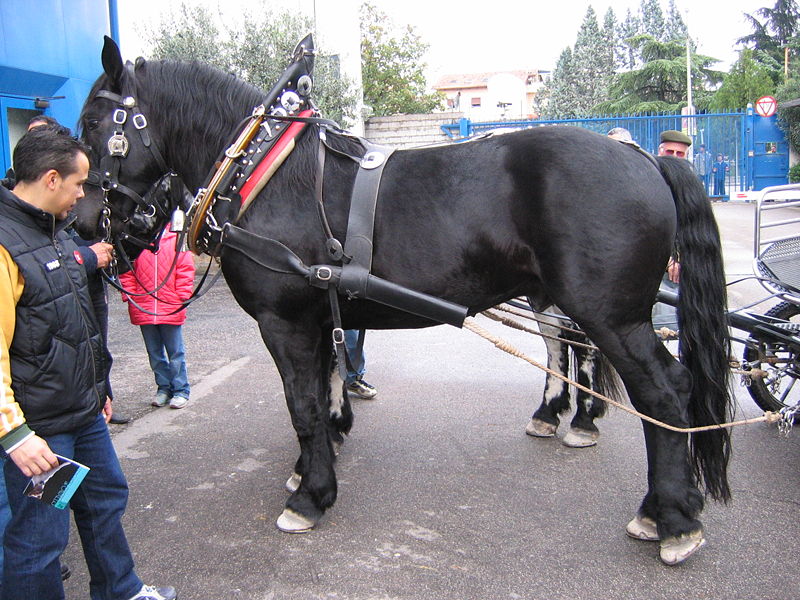 |
| Pinzgauer( source Internet) |
1°) C’est le nom d'un cheval appelé également Pinzgauer-Noriker . Ce cheval est originaire de l’ancienne province romaine de Noricum Au XV°siècle les Evêques de Salzbourg les croisent avec des Andalous espagnol. La race ressemble à l'Appaloosa, mais le Pinzgauer est plus lourd
Le Pinzgauer pur race et très cher à l achat Par contre beaucoup d’ exploitations agricoles en Autriche ont utilisé cet animal pour le travail agricole
2e,)C’est aussi le nom d'un véhicule construit par Steyr-Daimler-Puch qui a donné ce nom de cheval car s'agit d'un véhicule rustique devant effectuer des travaux agricoles
Historique et description
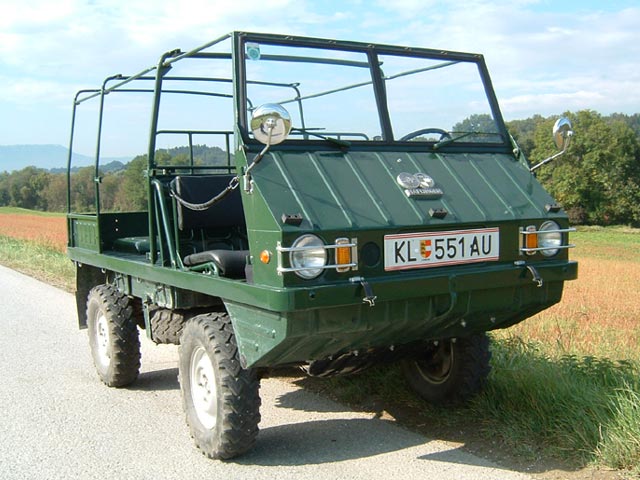 |
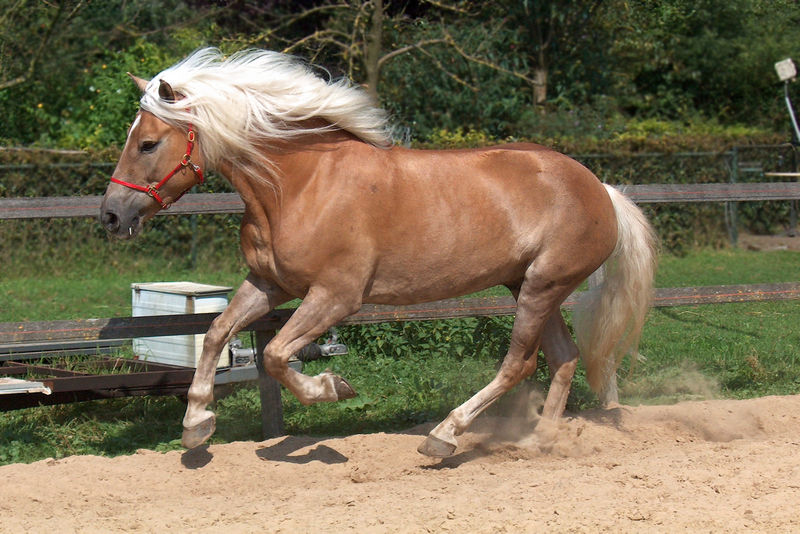 |
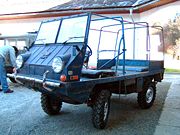 |
| Haflinger 1967 |
Haflinger |
Haflinger 1971 |
En 1959, Steyr-Daimler-Puch, construit un petit et léger véhicule tout terrain qui reçoit le nom de Haflinger ( cheval autrichien )
Ce véhicule ultraléger a un équipage de trois hommes,
En 1971, un nouveau véhicule a été a été construit et qu'il reçoit le nom de Pinzgauer.
Le véhicule a été très léger 1950kgs et il peut transporter une charge utile de 1 tonne
Il dispose également d'un châssis très perfectionné contribuant à sa grande mobilité.
Le Pinzgauer n’ a pas a proprement parlé de châssis mais un pont qui distribue le poids de manière plus égale et maintient le centre de gravité le plus bas possible.
Le Pinzgauer a les mêmes caractéristiques que l’ Unimog et HMMWV
Il est propulsé par un moteur refroidi par air 4 cylindres en ligne de 2499 CV avec deux Carburateurs Zenith . Il a une garde au sol élevée
Il est très coûteux à produire et très sophistiqué.
Un réservoir est monté sur le côté droit
En 1988, Steyr produit un véhicule radicalement nouveau avec un nouveau moteur diesel refroidi à l'eau à 4 cylindres turbo et des pneumatiques de plus grande largeur assurant une plus grande stabilité
En 2000, Magna qui a acheté Steyr Daimler Puch vend ses droits sur le Pinzgauer à la société anglaise Automobile Technick Ltd
Actuellement Pinzaugeur est produit par BAE Systems Land Systems
Il a été utilisé par plusieurs armées
Le plus commun sont soit des types "K" (hard top) ou «M» (bâché)
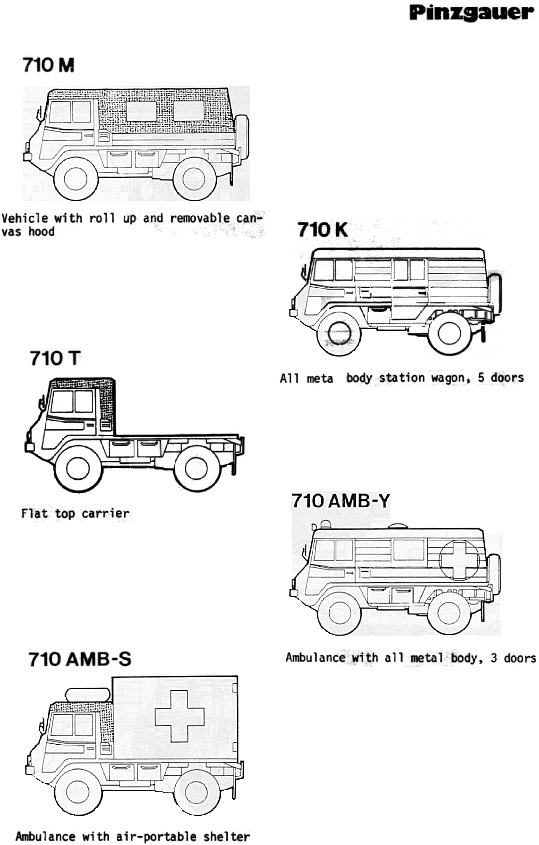 |
Versions
Type 710 Essence ( 4x4 )
M Bâché pour 10 passagers
T plateau
K 5 portes Tôlée
AMB-Y ambulance
AMB-S ambulance avec shelter
Type 712 Essence (6x6 )
M Bâché pour 10 passagers
T plateau
FW incendie
K 5 portes Tôlée
W véhicule atelier aérotransportable shelter
DK pick-up 4 portes
AMB-S ambulance avec shelter
Type 716 Diesel 4x4
M Bâché
K hard top
AMB ambulance
Type 718 Diesel 6x6 :
T châssis cabine
M Bâché
K hard top
AMB ambulance
FW Incendie
Caractéristiques 710 M
Poids (Charge utile 2950 kg)
Poids à vide 1950 kg)
Longueur 4,2 m
Largeur 1.77 m
Hauteur 2.16 m
Equipage 2 +10
Moteur
2,5 L refroidi par air quatre cylindres
87 CV
5 vitesses
Vitesse 105 km / h
Réservoir Surface 75 liters
Autonomie 400 km
Introduction
We are in Austria in Pinzgau a district of Salzburg province where we found Pinzgauer . But under this name is hide several things
1st he was the name of an horse know also as Pinzgauer-Noriker
 |
| Pinzgauer |
This horse originally came from the Roman province of Noricum located in central Europe. Bishops in Austria bred the horses in the 15th century where they mixed it with Spanish Andalusians. The resulting breed is spotted and resembles the American Appaloosa, but the Pinzgauer is slighter heavier from its draft ancestry. The pure Pinzgauer horses are rare and are more expansive at the purchase Most farms in Austria have used and use still the animal for work
2nd he was also the name of a vehicle made by Steyr-Daimler-Puch and named after this horse because it is an vehicle for Hard Duties
History and description
In 1959 Steyr-Daimler-Puch, Austrian vehicle manufacturer made a small and very light cross country military vehicle, which receive the name of Haflinger (Austrian horse )
 |
 |
 |
| Haflinger1967 |
Haflinger |
Haflinger 1971 |
This vehicle was ultra light with three men, and was designed for cross country use.
In 1971, a new vehicle was was built and he receive the name of Pinzgauer.
The vehicle was very light weight 1950kgs and he could carry a payload of 1 ton
It also has a very advanced chassis contributing to its high mobility. The Pinzgauer has a central tube chassis with a transaxle which distributes the weight more evenly and keeps the center of gravity as low as possible. The Pinzgauer also has portal Awles as Unimog and HMMWV to provide extra clearance over obstacles
He was propelled by an engine air cooled 4 cylinder in- line of 2499 cc with two Zenith carburators This allows high ground clearance. The axles swing independently out of a central heavy cast steel tube that acts as a frame and protects the front to rear drive shaft. This is very expensive to build, but is very sophisticated.
A jerry can frame is mounted on the right side
In 1988 Steyr made a radical change with a new diesel engine water cooled at 4 cylinder turbo Tires were made larger and the track width widened for more stability
In 2000 Magna who have bought Steyr Daimler Puch sold its rights to the Pinzgauer to the English firm Automotive Technicks Now Pinzaugeur was produce by BAE Systems Land Systems
He was used by several armies
The most common body types are either "K" (hard-topped) or "M" (soft-topped)
Versions
 |
Type 710 Gasoline ( 4x4 )
M soft top with rear passenger seats (10 passenger total
T flat bed carrier
K 5 door hard top station wagon
AMB-Y ambulance
AMB-S ambulance with air-portable removable shelter
Type 712 Gasoline (6x6 )
M soft top with rear passenger seats (10 )
T flat bed carrier
FW fire truck
K 5 door hard top station wagon
W workshop with air-portable shelter
DK 4 door crew cab pickup
AMB-S ambulance with air-portable removable shelter
Type 716 Diesel 4x4
M soft top
K hard top
AMB ambulance
Type 718 Diesel 6x6 :
T châssis cabine
M soft top
K hard top
AMB ambulance
FW Fire truck
Technical data
Weigth (Payload 2950 kg )
Weigth Empty 1950kg )
Length 4.2 m
Width 1.77 m
Heigth 2.16 m
Crew 2 + 10
Engine
2.5 L air-cooled four cylinder engine
87 HP
5 speed
Speed 105 kms/h
Tank size 75 Liters
Range 400 kms






.jpg)
.jpg)
.jpg)
.jpg)





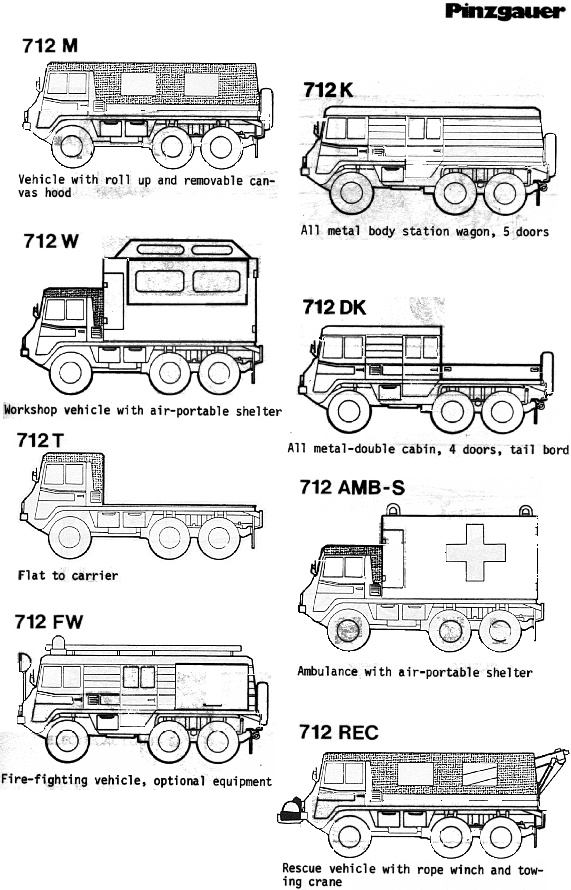
.jpg)
